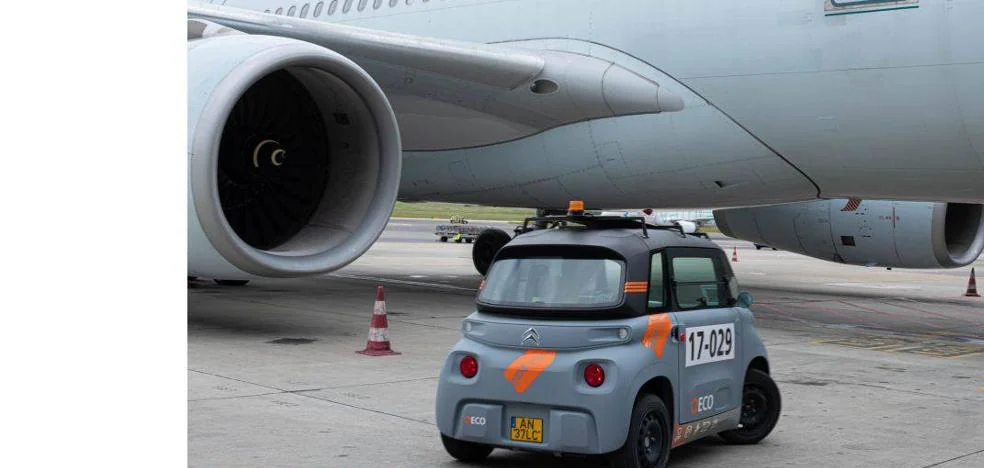We tested the three mechanical variants with which the German model ends up on the Spanish market
The Opel Astra becomes years, nothing more and nothing less than 82 if we take into account its origin with the name Kadett. With its current name it reaches the sixth generation. An authentic revolution, not only aesthetically, but also in terms of engines, as the model gets for the first time a plug-in hybrid version, to which a 100% electric one is added. It also emphasizes a 100% digital Pure Panel driving position, with three screens and advanced driver assistance features.
The new Astra joins the C-segment where SUV models currently dominate, such as its ‘older brother’ the Grandland, but as an alternative for those who do not want to fall for the temptations of the more fashionable segment, with more sportiness and character. This five-door tries to be more exciting. It does so from an aesthetic point of view with the “Opel Vizor” grille in the form of a compass on the front, and with a two-tone paintwork, with a darkened roof, which makes it look sportier and lower than it actually is .
With a length of 4,374 mm, a width of 1,860 mm and a boot capacity of 422 liters, this sporty look does not detract from space. Five people fit perfectly with a suitcase of very correct dimensions. Although those who need more space can wait a few months for the Sports Tourer family version, with a trunk that starts from a capacity of 597 liters.
With versions featuring highly efficient 225 hp petrol and diesel engines, combined with six-speed manual transmissions and eight-speed automatic transmission, the major novelty is the plug-in hybrid version, and the first 100% electric Astra will arrive from 2023.
Petrol engines are available with power ratings of 110 and 130 hp. The most powerful of these is the one we got to drive during the dynamic test of the car in the suburbs of Madrid. It is true that although it shares a platform with the Peugeot 308, its character is completely different. For starters, when we get to the wheel we find a conventional steering wheel, with three large screens and a ‘head-up display’ that projects information on the windshield (like the navigation map), but with the classic buttons that make it easier to access the most frequently used functions without getting lost in menus through a screen. The car is much stiffer than its French brother, and 14% stiffer than the Astra it replaces, which translates into very good sound insulation (especially with this petrol variant) and a sportier feeling when driving. By this we don’t mean that the car is more uncomfortable, far from it. Comfort is especially guaranteed by the excellent seats in the front with AGR certification and no fewer than 16 adjustments. With its 1.2 turbo engine and the aforementioned 130 hp, it approves an average consumption of 5.5 l/100, which in our test rose slightly to an average of 6 liters.
But personally I found the response of the diesel engine very interesting, also with 130 CV, a much appreciated response to the accelerator pedal, but with consumption reduced to an average of about 4.4 l/100 km (in our test we came not to more than 5 liters), and a great autonomy that will allow us to cover many kilometers without having to stop to refuel. A highly recommended variant for those who are going to make a lot of trips and rides on the road and highway. In both cases, these combustion models, diesel and petrol, have the DGT type C environmental label.
If, on the other hand, our natural environment is the city, the plug-in hybrid is the most suitable variant, with 180 hp and a maximum torque of 360 Nm. In pure electric mode, it can drive up to 60 kilometers (WLTP) without emissions, which in an urban environment can go up to almost 74 kilometers.
Under these conditions, the approved consumption is 1.1 liters, but we must always take into account that if we leave the city and drive on the highway or highway, the weight of the batteries is noticeable, consumption increases and the car does noticeably a little lazy, though without at least lagging behind. It is the consideration that must be paid for having the ‘Zero’ sticker of the DGT. In any case, if we have a plug to charge it (in about 2 hours with a 7.4 kW charger) and we only make long distances a few times a year, this variant can perfectly meet all our needs .
Engines: petrol, diesel and plug-in hybrid from 110 to 179 hp
Autonomy in electric mode: 60 km
Length/width/height (in meters): 4.37/1.86/1.44
Trunk: from 422 to 1,339 liters
Price: from € 24,660 (fee from € 230/month for entry € 3,300)
In terms of safety, the new Astra is equipped with the latest driver assistance systems, from the aforementioned ‘head-up display’ projected directly onto the windscreen, to the semi-autonomous Intelli-Drive 2.0 assistance system and the Intelli-Vision driver. camera. degrees, passing through the IntelliLux LED Pixel matrix lighting, which has 168 LED diodes that light up depending on the ambient light and traffic conditions.
Source: La Verdad
I am Ida Scott, a journalist and content author with a passion for uncovering the truth. I have been writing professionally for Today Times Live since 2020 and specialize in political news. My career began when I was just 17; I had already developed a knack for research and an eye for detail which made me stand out from my peers.



